When did the Independence Movement Day in South Korea start?
About Independence Movement Day in South Korea Holiday
As the vibrant energy of South Korea’s bustling cities unites with the country’s rich cultural heritage, it’s no surprise that the annual Independence Movement Day is a highly anticipated event for locals and tourists alike. Celebrated on March 1st, this important holiday commemorates the Korean people’s struggle for independence from Japanese colonial rule in 1919.
On this day, the streets of South Korea are filled with a sense of national pride as the country honors the brave men and women who sacrificed their lives for the nation’s freedom. From colorful parades to solemn ceremonies, there are numerous ways to experience and participate in this patriotic holiday. While the main festivities take place in the capital city of Seoul, smaller towns and villages across the country also hold their own unique events and traditions.
In addition to the cultural significance of Independence Movement Day, this holiday also offers a chance to explore the beautiful landscapes and vibrant cities of South Korea. From the bustling capital to the peaceful countryside, visitors can immerse themselves in the country’s history and culture while taking in stunning sights and enjoying delicious local cuisine.
Whether you’re a history buff, a foodie, or simply looking for a unique and meaningful holiday experience, the Independence Movement Day in South Korea is a must-visit destination for travelers from all corners of the world. Plan your trip now and discover the true spirit and beauty of this remarkable country.
Independence Movement Day in South Korea: Celebrating the Nation’s Struggle for Freedom and Democracy
The 1st of March is a highly significant day in South Korea. It marks the Independence Movement Day, also known as Samiljeol, which commemorates the 1919 uprising against Japanese colonial rule. This holiday holds great cultural and historical significance for the people of South Korea, as it honors the bravery and sacrifices of the independence activists who fought for their country’s freedom. On this day, South Koreans come together to celebrate their nationality, culture, and democratic values, making it one of the most important national holidays in the country.
Key Takeaways
- Independence Movement Day, also known as Samiljeol, is held on March 1st every year.
- It commemorates the 1919 uprising against Japanese colonial rule.
- This holiday is a symbol of South Korea’s struggle for freedom and democracy.
- It is a significant national holiday, celebrated with great pride and patriotism.
History and Origin
The history of Independence Movement Day dates back to 1919, during the Japanese occupation of Korea. Koreans yearned for independence and were inspired by the spirit of nationalism and self-determination spreading throughout the world. On March 1st, 33 activists from various provinces gathered in Seoul and signed the Declaration of Independence, proclaiming Korea’s independence. This sparked a wave of peaceful demonstrations across the country, where millions of Koreans participated to demand freedom.
The protestors adopted the non-violent resistance movement, which was heavily influenced by Gandhi’s peaceful protests in India. The protestors wore traditional Korean outfits, sang the national anthem, and carried the Korean flag, known as Taegeukgi, as they marched through the streets. However, the Japanese colonial government responded with extreme violence, killing and injuring thousands of protestors and arresting many others.
Although the movement was ultimately unsuccessful in gaining immediate independence, it proved to be a crucial turning point in Korean history. It captured the unwavering spirit of the people and sparked a sense of national unity and resistance against the Japanese occupation. Today, this day is celebrated to honor the courage and perseverance of those who fought for their country’s freedom.
Historical Context
The Independence Movement Day is not only about commemorating the 1919 uprising. It is also a reminder of South Korea’s turbulent history, marred by foreign invasions and colonization. From the late 1800s, Korea was under Japanese rule, and the people faced discrimination, oppression, and exploitation. The 1919 movement was a culmination of years of resistance and served as a catalyst for the nation’s anti-colonial struggle.
The 1919 uprising also had a significant impact on the future of South Korea. It marked the start of the modern independence movement, leading to other major events and demonstrations in the following years. The unconditional surrender of Japan in 1945, towards the end of World War II, was another crucial turning point for Korea’s independence. And on August 15, 1945, South Korea finally gained its long-awaited freedom.
Significance and Meaning
The Independence Movement Day holds deep cultural and historical significance, not only for South Koreans but also for the world. It symbolizes the struggle for freedom, equality, and human rights and serves as a reminder of the sacrifices made by those who fought for their country’s independence. The holiday also celebrates the nation’s democratic values, promoting social justice, peace, and harmony.
Cultural Significance
The Independence Movement Day is an essential part of South Korea’s cultural heritage. It upholds traditional values, national identity, and pride in the country’s history. On this day, people take part in various cultural activities, such as traditional performances, folk games, and historical exhibitions, to commemorate their heritage and honor their ancestors. The holiday also serves as a platform to showcase South Korea’s rich culture and traditions to the world.
The Korean flag, Taegeukgi, plays a significant role in the cultural symbolism of this holiday. The flag has a white background with a red and blue circle in the center, representing the concept of Yin and Yang. The white color symbolizes peace and purity, while the red and blue represent the opposing yet complementary forces of nature. The Taegeukgi is proudly displayed in every household, workplace, and public space, making it an iconic symbol of national pride.
Symbols and Decorations
Apart from the Taegeukgi, other symbols and decorations play a vital role in the Independence Movement Day celebrations. Traditional outfits, such as the Hanbok, are often worn by people of all ages on this day. The Hanbok is a beautiful and colorful garment, with embroidered designs and vibrant patterns, reflecting South Korea’s rich cultural heritage.
Flowers are also an essential part of this holiday. The national flower of South Korea, Mugunghwa, or Rose of Sharon, represents the spirit and resilience of the Korean people, and is often used as a decoration during the celebrations. Colorful lanterns, called Taegeuk Daenggi, are also a common sight, symbolizing the hope for a brighter future.
Traditions and Celebrations
The Independence Movement Day is a national holiday in South Korea, and therefore, all offices, schools, and institutions are closed. The main event of the day is the Independence Movement Day Ceremony, held in Seoul at the Independence Hall of Korea. The ceremony begins with the raising of the Korean flag, followed by various performances and speeches to honor the nation’s struggle for freedom.
The streets and public spaces are also bustling with activities, such as parades, cultural performances, and exhibitions, organized by the government and local communities. Another traditional ritual is the wearing of white clothing, symbolizing the purity of the movement. People also visit the graves of independence activists and offer flowers and pay their respects.
Food and Cuisine
As with any holiday, food is central to the Independence Movement Day celebrations. Traditional dishes and beverages are an essential part of this holiday and hold cultural significance. One of the most popular dishes is the jeon, a savory pancake with a variety of fillings, such as meat, seafood, or vegetables. Another staple is the bibimbap, a flavorful dish of rice, meat, vegetables, and a spicy sauce, served in a hot stone bowl.
A popular beverage during this holiday is Makgeolli, a traditional rice wine that has been enjoyed in Korea for centuries. Other dishes that are often served during this day include bulgogi, a type of marinated beef, and tteokguk, a rice cake soup, usually eaten during the Korean New Year.
Recipe for Bibimbap
- Ingredients:
- 1 cup of uncooked short-grain rice
- 2 cups of water
- 1 pound of beef, thinly sliced
- 3 tablespoons of soy sauce
- 2 tablespoons of sesame oil
- 1 tablespoon of sugar
- 1 clove of garlic, minced
- 1 carrot, julienned
- 1 zucchini, julienned
- 1 cup of spinach
- 4 eggs
- 4 tablespoons of gochujang (Korean chili paste)
- Directions:
- 1. Rinse the rice and cook it in a rice cooker or on the stovetop with 2 cups of water.
- 2. In a bowl, mix the beef with soy sauce, sesame oil, sugar, and garlic.
- 3. In a pan, stir-fry the marinated beef until fully cooked.
- 4. In the same pan, stir-fry the vegetables separately until cooked.
- 5. In a bowl, beat the eggs and make thin omelets with them, cutting them into thin strips.
- 6. In a large bowl, mix the cooked rice with the beef, vegetables, and egg strips.
- 7. Serve the bibimbap in individual bowls, topped with a spoonful of gochujang on top.
Attire and Costumes
The traditional clothing worn during the Independence Movement Day celebrations is the Hanbok. This garment has deep cultural and historical significance, representing the nation’s traditional values and customs. Men often wear a top called Jeogori, paired with loose pants called Baji, while women wear an upper garment called Chima and a longer skirt called Jeogori. These can vary in design and colors, depending on the region, family, and social status.
During the Samiljeol celebrations, both men and women may wear a ribbon called the Daenggi around their head, symbolizing the spirit of the independence movement. The color of the ribbon is usually white, representing peace and purity.
Music and Songs
Traditional songs and music are a significant part of the Independence Movement Day celebrations. The most popular song is “Aegukga,” South Korea’s national anthem. This anthem was first sung during the 1919 march and became a symbol of national liberation. Another popular song is “March for Independence,” also known as “Samiljeong,” which captures the spirit of the independence movement and is often sung during the celebrations.
Geographical Spread
The Independence Movement Day is celebrated throughout South Korea, but with regional variations. The main event is typically held in Seoul, the capital, at the Independence Hall of Korea, but other cities and provinces also have their own celebrations. In Busan, the Yongdusan Park hosts a national event, while Daegu holds a re-enactment of the Declaration of Independence ceremony. In addition to these official events, local communities and institutions organize their own celebrations, making this holiday widely celebrated across the country.
Modern-Day Observations
Since its origins in 1919, the Independence Movement Day has evolved and changed over time. It is no longer just a celebration of the nation’s past but also a reflection of the present. Modern elements, such as social media and technology, have been incorporated to spread awareness and educate the younger generation about the holiday’s significance.
However, the core values and traditions of this holiday remain the same. It is still a day to come together as a nation, remember the past, celebrate the present, and look towards a better future.
Interesting Facts or Trivia
- The Pisces constellation is visible in the sky during Independence Movement Day, representing the bravery of the 33 activists who signed the Declaration of Independence.
- During the 1919 march, protestors also formed a human chain across the Taedong Bridge in Pyongyang, North Korea, which has now become a symbol of Korean unity.
- The 1919 uprising was the first public display of the Korean national flag, Taegeukgi, which was banned under Japanese rule.
- The 33 independence activists who signed the Declaration of Independence were arrested and later exiled to China.
Legends and Myths
There are various legends and myths surrounding the Independence Movement Day, passed down through generations. One of the most popular legends is the “Window of Heaven” myth, where it is believed that when a Korean sings the national anthem, “Aegukga,” with their eyes closed, they will see the window of heaven opening.
Different myths and folklore also surround the symbolism of the Korean flag, Taegeukgi. Some say that the red and blue circle represents the sun and moon, while others believe that it represents the yin and yang. These legends and myths have become an integral part of the holiday’s tradition and add to its unique cultural significance.
Social and Economic Impact
The Independence Movement Day has not only left its mark on Korean history and culture but also on the social and economic aspects of the country. This holiday brings people of all ages, backgrounds, and regions together, promoting national unity and harmony. It also serves as a reminder of the importance of democracy, freedom, and human rights, values that South Korea holds dear to its heart.
Economic Impact
The Independence Movement Day is a significant holiday, and its importance is reflected in the country’s economy. This holiday
How to Say "Independence Movement Day in South Korea" In Different Languages?
- Afrikaans
- Onafhanklikheidsbeweging Dag, Suid-Korea (af-ZA)
- Arabic
- يوم حركة الاستقلال، كوريا الجنوبية (ar-SA)
- Chinese
- 南韩独立运动日 (zh-CN)
- French
- Jour du Mouvement pour l'Indépendance, Corée du Sud (fr-FR)
- French (Canada)
- Journée du Mouvement pour l'Indépendance, Corée du Sud (fr-CA)
- German
- Unabhängigkeitstag, Südkorea (de-DE)
- Hindi
- आजादी आंदोलन दिवस, दक्षिण कोरिया (hi-IN)
- Italian
- Giorno del Movimento di Indipendenza, Corea del Sud (it-IT)
- Japanese
- 韓国独立運動の日 (ja-JP)
- Portuguese
- Dia do Movimento de Independência, Coreia do Sul (pt-BR)
- Russian
- День независимости, Южная Корея (ru-RU)
- Spanish
- Día del Movimiento de Independencia, Corea del Sur (es-ES)
- Spanish (Argentina)
- Día del Movimiento de Independencia, Corea del Sur (es-AR)
- Spanish (Mexico)
- Día del Movimiento de Independencia, Corea del Sur (es-MX)
- Vietnamese
- Ngày Độc lập, Hàn Quốc (vi-VN)
Independence Movement Day in South Korea Also Called
"Korean Liberation Day - Celebrating Independence"Countries where "Independence Movement Day in South Korea" is celebrated:
FUN FACT:
In year 1949, Independence Movement Day in South Korea is celebrated on March 1 for the first time.HOLIDAY CHECK: We strive for accuracy and fairness. But if you see something that doesn't look right, please click here to contact us!
Wishes / Messages / Quotes
Coming soon...FAQ
-
What is the significance of Independence Movement Day, South Korea?
Independence Movement Day, also known as Samiljeol, commemorates the March 1st Movement of 1919, when Koreans rose up against Japanese colonial rule and declared their independence. -
When is Independence Movement Day, South Korea celebrated?
Independence Movement Day is celebrated on March 1st every year. -
What is the history behind Independence Movement Day, South Korea?
In 1910, Korea was annexed by Japan and remained under Japanese rule until the end of World War II. The March 1st Movement of 1919 was a peaceful protest against the occupation, led by Korean intellectuals and students. -
How is Independence Movement Day, South Korea declared a national holiday?
In 1949, the South Korean government officially declared March 1st as a national holiday in honor of the March 1st Movement. -
What are some traditional activities during Independence Movement Day, South Korea?
People often participate in processions, reenactments, and cultural performances to remember and honor the spirit of the March 1st Movement. There may also be ceremonies, speeches, and wreath-laying ceremonies at monuments and memorials. -
How do people show their patriotism on Independence Movement Day, South Korea?
People often wear traditional Korean clothing, such as hanbok, and display the Korean flag, also known as the Taegukgi, to show their patriotism and honor the country's history. -
Do businesses and schools close on Independence Movement Day, South Korea?
Yes, it is a national holiday in South Korea and many businesses and schools close for the day. -
Are there any special foods associated with Independence Movement Day, South Korea?
There are no specific foods associated with Independence Movement Day, but traditional Korean dishes, such as bulgogi and bibimbap, are often enjoyed with family and friends. -
Can anyone participate in the celebrations of Independence Movement Day, South Korea?
Yes, Independence Movement Day is a public holiday and anyone can participate in the celebrations and activities. -
Is Independence Movement Day, South Korea a somber or joyful holiday?
It is a holiday that commemorates a historical event, so there may be a mix of emotions. However, it is mainly seen as a day to celebrate the spirit of independence and national pride. -
Is there any significance to the number 3 in the name 'March 1st Movement'?
Yes, the number 3 in Korean culture symbolizes unity and harmony, which is significant to the movement's call for unity against Japanese colonial rule. -
Are there any other names for Independence Movement Day, South Korea?
Yes, it is also known as Samiljeol, meaning the '3/1 Movement', and Samil Independence Movement. -
Is there a related holiday in North Korea?
Yes, North Korea also celebrates the March 1st Movement as a national holiday, but it is known as 'Choguk Movement Day' instead. -
Are there any traditional songs associated with Independence Movement Day, South Korea?
Yes, 'March for Independence' and 'Sam Il Jeol Guchihap' are two traditional songs often sung during Independence Movement Day celebrations. -
Do other countries celebrate Independence Movement Day, South Korea?
No, this holiday is specific to South Korea and commemorates a significant event in their history. -
Is Independence Movement Day, South Korea a religious holiday?
No, it is a secular holiday that honors a historical event and a sense of national identity. -
Are there any restrictions or guidelines for celebrating Independence Movement Day, South Korea?
No, as long as celebrations are conducted in a respectful manner, there are no specific restrictions or guidelines for celebrating Independence Movement Day. -
What is the official flower associated with Independence Movement Day, South Korea?
The azalea is the national flower of South Korea and is often seen as a symbol of the March 1st Movement. -
Are there any sports events or competitions held during Independence Movement Day, South Korea?
Yes, there may be various sports events and competitions held in honor of Independence Movement Day, such as the National March 1st Memorial Cup Taekwondo Championship. -
Do people exchange gifts on Independence Movement Day, South Korea?
No, gift-giving is not a traditional practice on this holiday. -
Is there a specific dress code for attending Independence Movement Day celebrations?
There is no specific dress code, but wearing traditional Korean clothing or the colors of the Korean flag (red, blue, and white) is a common way to show respect for the holiday. -
What is the official symbol of Independence Movement Day, South Korea?
The Korean peninsula in the shape of the Taeguk (yin-yang symbol) is the official symbol of Independence Movement Day. -
Do people go on vacations during Independence Movement Day, South Korea?
Many people do take advantage of the public holiday to go on vacations or visit family and friends, but there is no specific tradition of doing so. -
How long has Independence Movement Day, South Korea been celebrated?
Independence Movement Day has been a national holiday in South Korea since 1949, but the commemorations and celebrations have been ongoing for over 100 years. -
Are there any special parades during Independence Movement Day, South Korea?
Yes, there may be parades in major cities, such as Seoul, featuring historical reenactments and performances. -
Is Independence Movement Day, South Korea associated with any other holidays?
Not necessarily, but some may view it as a precursor to the Korean Independence Day on August 15th, which marks the end of Japanese colonial rule.

Seoul shares close lower ahead of holiday | Yonhap News Agency
SEOUL, Feb. 29 (Yonhap) — South Korean stocks closed lower Thursday as investors sat on the sidelines ahead of the holiday this week while keeping a watchful eye on U.S. inflation trends. The local currency gained against the U.S. dollar. The benchmark Korea Composite Stock Price Index (KOSPI) shed 9.93 points, or 0.37 percent, to 2,642.36. Trade volume was moderate at 484 million shares worth 12.5 trillion won (US$9.44 billion), with losers outpacing gainers 545 to 341. Institutions were net sellers by offloading 507.3 billion won, while foreigners scooped up a net 175.1 billion won. Individuals bought a net 310 billion won. Seoul shares mostly traded in negative terrain tracking overnight losses on Wall Street, as the latest U.S. economic…
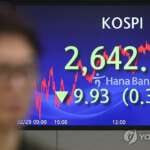
(LEAD) Seoul shares close lower ahead of holiday | Yonhap News Agency
SEOUL, Feb. 29 (Yonhap) — South Korean stocks closed lower Thursday as investors sat on the sidelines ahead of the holiday this week while keeping a watchful eye on U.S. inflation trends. The local currency gained against the U.S. dollar. The benchmark Korea Composite Stock Price Index (KOSPI) shed 9.93 points, or 0.37 percent, to 2,642.36. Trade volume was moderate at 484 million shares worth 12.5 trillion won (US$9.44 billion), with losers outpacing gainers 545 to 341. Institutions were net sellers by offloading 507.3 billion won, while foreigners scooped up a net 175.1 billion won. Individuals bought a net 310 billion won. Seoul shares mostly traded in negative terrain tracking overnight losses on Wall Street, as the latest U.S. economic…
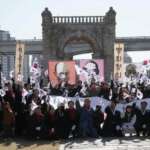
South Korea’s Yoon calls for unification, on holiday marking 1919 uprising against colonial Japan
SEOUL, South Korea: South Korea’s president lambasted North Korea on Friday over what he called its repressive rule and vowed to achieve a free, unified Korean Peninsula, weeks after North Korean leader Kim Jong Un rejected the idea of peaceful unification and threatened to occupy the South in the event of war. South Korean President Yoon Suk Yeol spoke on March 1 Independence Movement Day, a holiday marking a 1919 Korean uprising against Japanese colonial rule. “Now, we must move toward a free, unified Korean Peninsula,” Yoon said in a televised speech. “The North Korean regime relies solely on nuclear weapons and missiles while trapping its 26 million citizens in a quagmire of misery and despair.” “Unification is precisely what…
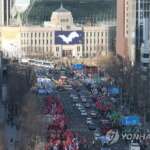
Police vow stern measures ahead of large-scale weekend rallies | Yonhap News Agency
SEOUL, Feb. 29 (Yonhap) — Police vowed Thursday to deal sternly with any illegal acts during large-scale rallies set to take place in Seoul over the weekend, including one by a doctors’ association to protest the government’s decision to increase the medical school enrollment quota. The Korean Medical Association (KMA), a major lobby group for doctors, plans to hold the rally in Seoul’s Yeouido district Sunday afternoon to protest the medical school quota increase, where about 25,000 people are expected to participate. Other rallies are also scheduled for the three-day holiday that include Friday’s March 1 Independence Movement Day holiday, including one slated for Friday by the far-right Liberty Unification Party that is expected to draw 35,000 people. Police plan…

Trainee doctors’ walkout continues despite looming punitive steps after deadline | Yonhap News Agency
SEOUL, March 1 (Yonhap) — Most striking trainee doctors remained off the job Friday after the government-set deadline for their return passed midnight amid attention over whether the government will take punitive measures against them. Nearly 10,000 trainee doctors nationwide walked off the job in the form of mass resignations last week in protest of the government’s decision to admit 2,000 more students to medical schools starting next year to address a shortage of doctors. The current quota is 3,058. The government had given the striking interns and resident doctors until the end of Thursday to return to work or face punitive action, such as the suspension of their medical licenses. So far, 294 out of around 9,076 protesting doctors…

(LEAD) Trainee doctors’ walkout continues despite looming punitive steps after deadline | Yonhap News Agency
SEOUL, March 1 (Yonhap) — Most striking trainee doctors remained off the job Friday after the government-set deadline for their return passed midnight, raising chances of the government taking punitive measures against them. Nearly 10,000 trainee doctors nationwide walked off the job in the form of mass resignations last week in protest of the government’s decision to admit 2,000 more students to medical schools starting next year to address a shortage of doctors. The current quota is 3,058. The government had given the striking interns and resident doctors until the end of Thursday to return to work or face punitive action, such as the suspension of their medical licenses. So far, 294 out of around 9,076 protesting doctors have returned…
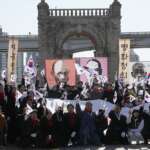
South Korea’s Yoon calls for unification, on holiday marking 1919…
SEOUL, South Korea (AP) – South Korea´s president lambasted North Korea on Friday over what he called its repressive rule and vowed to achieve a free, unified Korean Peninsula, weeks after North Korean leader Kim Jong Un rejected the idea of peaceful unification and threatened to occupy the South in the event of war. South Korean President Yoon Suk Yeol spoke on March 1 Independence Movement Day, a holiday marking a 1919 Korean uprising against Japanese colonial rule. “Now, we must move toward a free, unified Korean Peninsula,” Yoon said in a televised speech. “The North Korean regime relies solely on nuclear weapons and missiles while trapping its 26 million citizens in a quagmire of misery and despair.” “Unification is…
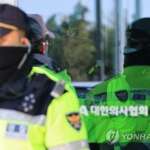
(3rd LD) Gov’t intensifies pressure on striking trainee doctors with police raid | Yonhap News Agency
SEOUL, March 1 (Yonhap) — The government intensified pressure on striking trainee doctors by conducting a police raid on offices of a major doctors’ association and repeating the back-to-work order Friday as many of them remained off the job after the government-set deadline for their return passed. The raids on offices of the Korea Medical Association (KMA) could send a message to thousands of striking interns and resident doctors that the government is serious about taking punitive measures against them, such as the suspension of their medical licenses. The raids marked the first investigative action by police with regard to the walkout. Nearly 10,000 trainee doctors nationwide walked off the job in the form of mass resignations last week in…

